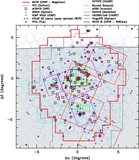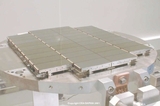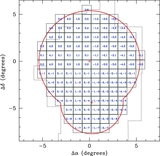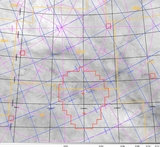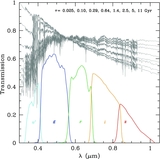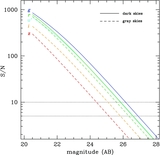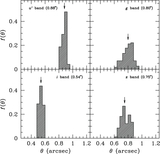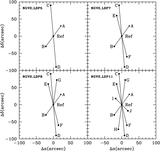Image Details
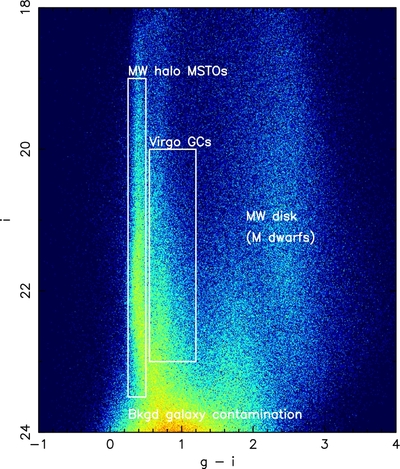
Caption: Figure 26.
Hess diagram, showing the relative density of occurrence of stars in the i magnitude vs. g − i color plane, based on gi imaging for 14 million compact sources detected in the NGVS. Several prominent features are labeled, including the locus defined by the main-sequence turnoff stars in the Galactic halo, faint (mostly M dwarf) stars belonging to the Galactic disk, GCs in the Virgo cluster, and a large population of faint, compact background galaxies. The NGVS line of sight passes through a slice of the Galactic halo that includes the Sagittarius stream and the Virgo Overdensity. At the limiting magnitude of the NGVS, metal-poor main-sequence turnoff stars in the halo are visible to a distance of ~180 kpc.
Copyright and Terms & Conditions
© 2012. The American Astronomical Society. All rights reserved.



